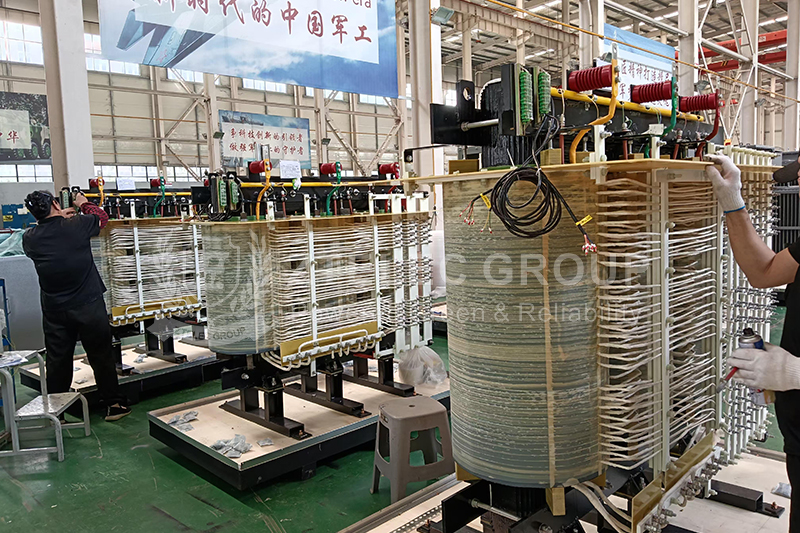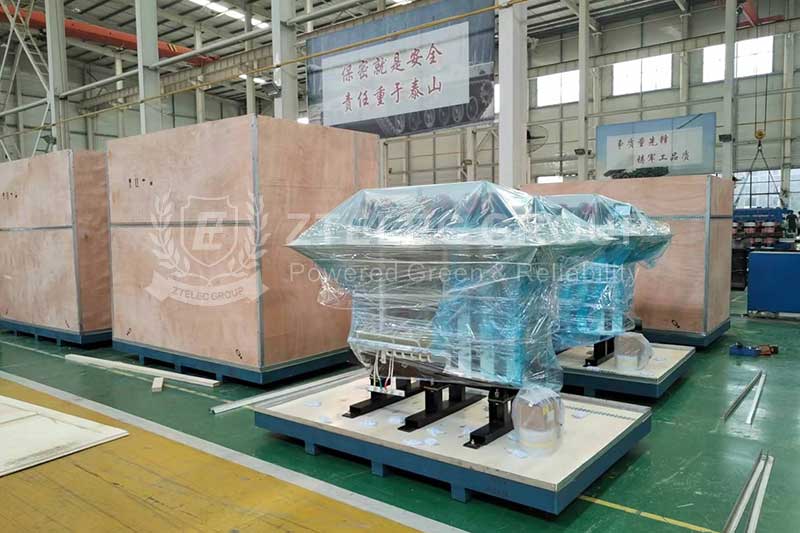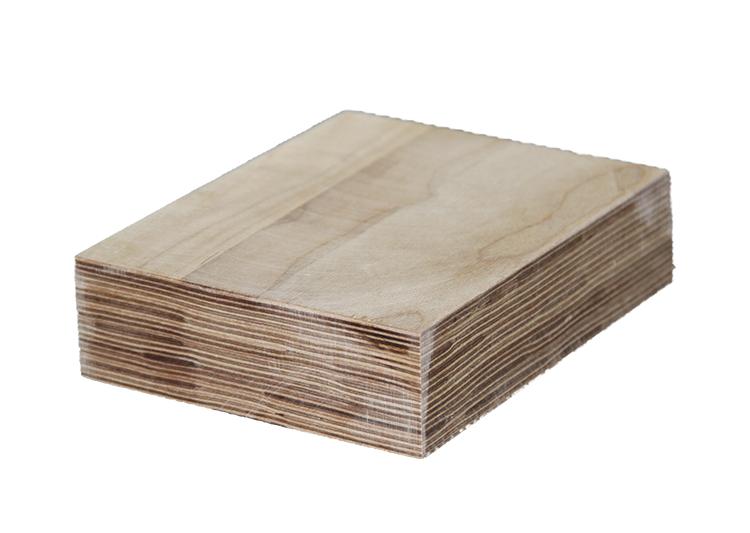Causes of Dry-Type Transformer Aging and Maintenance Guide
Dry-type transformers play a critical role in power systems. Over time, aging affects their performance and service life. Understanding the causes of transformer aging and applying effective maintenance strategies is key to ensuring a stable and reliable power supply.
Causes of Dry-Type Transformer Aging
1. Natural Aging of Components
Switch blades exposed to air are prone to corrosion, causing poor contact or short circuits over time.
Insulation materials, such as epoxy resin, deteriorate at high temperatures—becoming brittle and reducing insulation effectiveness.
2. Overload Operation Loss
Prolonged overload increases current and magnetic flux, causing overheating of windings and cores.
Heat accelerates insulation degradation, decreases transformer efficiency, and shortens lifespan, especially in peak load conditions.
3. Environmental Factors
Humidity, dust, and pollution weaken insulation strength and promote failure risks.
Contaminants impair heat dissipation and can lead to partial discharge and insulation damage.
4. Insulation Moisture Hazards
Moisture forms conductive channels in insulation, dramatically reducing its strength.
Damp insulation is prone to electrical breakdown and short circuits, especially in rainy seasons or basements.
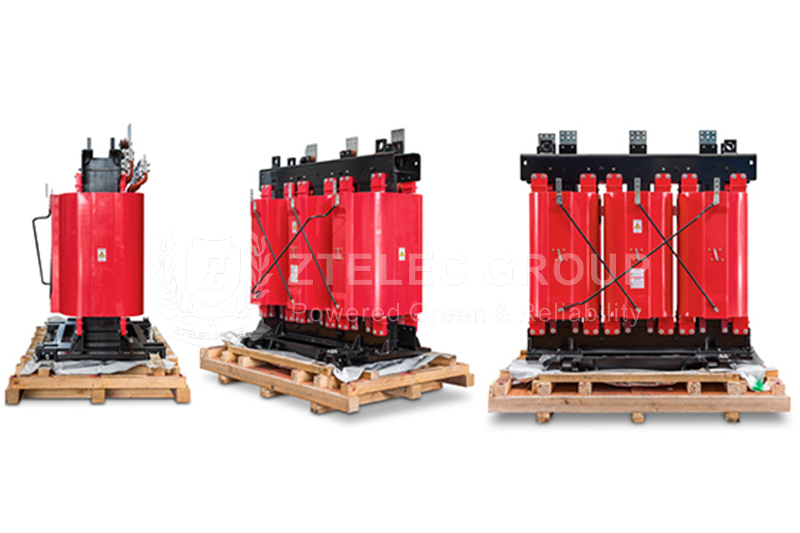
5. Vicious Cycle of Long-Term Overload
Overload raises temperatures, accelerating insulation aging, which further increases overheating risk—creating a destructive feedback loop.
6. Influence of Environmental and Temperature Fluctuations
High ambient temperatures worsen heat dissipation and cause internal temperatures to rise.
Frequent temperature changes induce expansion and contraction, loosening connections and accelerating aging.
7. Electrical Aging and Stress Aging Effects
Partial discharge, thermal stress, and vibration stress degrade insulation and reduce transformer reliability.
These factors damage internal components over time, increasing failure risk.
Dry-Type Transformer Maintenance Methods
1. Regular Inspection and Monitoring
Temperature Monitoring
Use infrared thermometers to monitor winding, core, and connection temperatures.
Ensure winding hot spot temperature (F-class insulation) does not exceed 155°C.
Vibration and Noise Monitoring
Monitor with vibration sensors to detect loose or deformed components.
Investigate noise exceeding 85dB promptly as it indicates possible internal faults.
Appearance Inspection
Check for insulation cracks, discoloration, and dust accumulation regularly.
Clean surfaces to improve heat dissipation and prevent insulation damage.
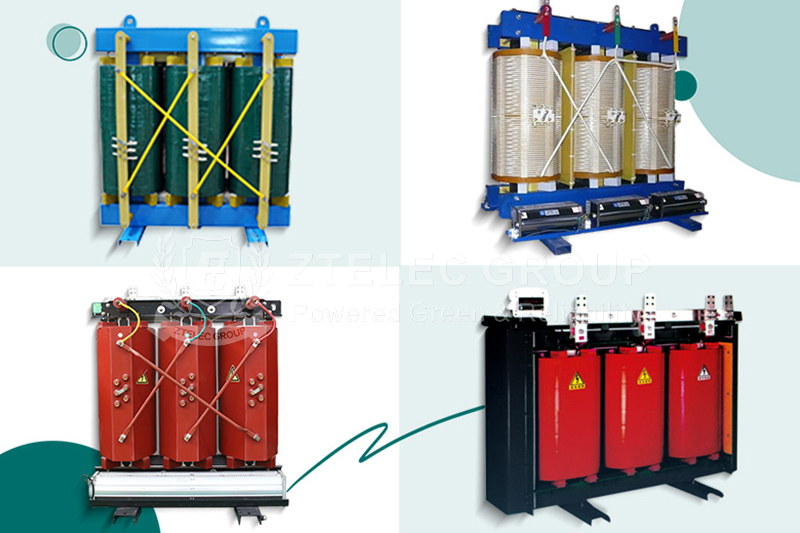
2. Electrical Performance Testing
Insulation Resistance Test
Measure winding-to-ground resistance using a megohmmeter.
For Class F insulation, resistance should be ≥ 500 MΩ at 20°C.
DC Resistance Test
Ensure winding resistance deviation is less than 2%.
Significant deviation suggests loose connections or winding faults.
Withstand Voltage Test
Conduct power frequency withstand voltage tests to verify insulation strength.
Test voltage is typically 80% of the factory value.
3. Environmental Control
Ventilation and Heat Dissipation
Maintain good ventilation in transformer rooms.
Install fans or air conditioners if necessary to keep ambient temperature below 40°C.
Moisture and Dust Protection
Use dehumidifiers in humid environments and seal cabinets to prevent dust ingress.
Clean insulation surfaces regularly to maintain insulation integrity.
Load Management
Install overload protection devices to prevent long-term overload operation.
Ensure automatic tripping when current exceeds rated limits.
4. Preventive Maintenance
Bolt Tightening
Check and tighten connection bolts every 1–2 years to prevent increased contact resistance and heating.
Insulation Repair
Repair minor insulation damage using insulating paint or tape.
Replace windings if insulation is severely aged.
Short-Circuit Protection
Install fast-acting fuses or current-limiting reactors to protect windings during short circuits.
By following these dry-type transformer maintenance methods, operators can effectively extend transformer lifespan, minimize faults, and ensure stable and reliable power system performance.
- more+releated article
- 2025-10-21Application of K Factor Transformer
- 2025-10-21Detailed explanation about transformer model w
- 2025-10-2010kV Oil-Immersed Transformer Safety: Lightnin
- 2025-10-20What are The Advantages of Phenolic Cotton Clo
- 2025-10-17Are Three-Phase Isolation Dry-Type Transformer
- 2025-10-17G10 Epoxy Sheet: Choosing the Right Specificat
- 2025-10-1610kV Oil-Immersed Transformer Operation Inspec
- 2025-10-163240-B Epoxy Phenolic Glass Fiber Cloth Lamina
- 2025-10-15G10 Epoxy Sheet: The Preferred Insulation Mate
- 2025-10-15Analysis of Energy-Saving and Noise Control Te

